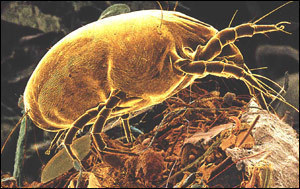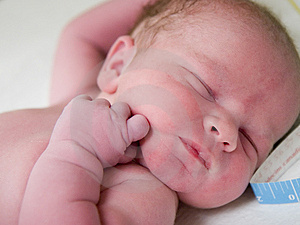How Big are Mites?
The size of mites can range from very small to microscopic.  These little bugs can live in just about any environment. The most common species that we are familiar with are the dust mites that we have at home. Due to their small size, most of their species being microscopic, they usually are unnoticed. They usually live freely in many different habitats including the bed you sleep on at night. Scientists estimate that there are more than 48,000 species of mites.
These little bugs can live in just about any environment. The most common species that we are familiar with are the dust mites that we have at home. Due to their small size, most of their species being microscopic, they usually are unnoticed. They usually live freely in many different habitats including the bed you sleep on at night. Scientists estimate that there are more than 48,000 species of mites.
Habitat
Mites can be found in a lot of different places. They can thrive in both water and soil. A large number of the species of mites are parasitic and live off animals, molds, and plants. Some of the parasitic types of mites out there that live on plants include gall mites, spider mites, and thread footed mites. Examples of mites that tend to attack animals include mange mites, demodex mites, and dust mites.
The size of mites is so small that even insects also fall prey to these little pests. There are species of these little critters that attach themselves to honeybees. Some are so small they can even live inside the tracheae of insects. In fact, there are hundreds of species of mites that pick on different bee species. Do take note that scientists believe that though there are parasitic species that live in animals, there are also species that are rather symbiotic in nature.
The Mites in Your Home
If you intend to check out where there are most mites in your home then the first place to look would be on your bed. Due to the small size of mites, experts estimate that there are about 100,000 up to as much as 10 million mites on a typical used mattress.
Take note that around ten percent of a pillow that has been used for about two years is actually composed of dead mites plus their deposit of droppings. Other than your bed, the other places where you can find a lot of mites include the furniture upholstery and house carpeting.
Allergic Reaction
The most common problem people have with mites is an allergic reaction. Studies show that the most common allergic symptoms one can get include: frequent nose rubbing in children, blue colored skin under a patient's eyes, frequent awakening, facial pain, cough, postnasal drip, itchy throat, roof of mouth, and nose, nasal congestion, itchy watery eyes, infantile eczema, asthma, runny nose, and hay fever. One may experience some of these symptoms or even all of them.
Sanitation and Treatment
There are sanitation and treatment methods to avoid the said symptoms. The following will help reduce symptoms. First off, get dust mite proof pillow cases and beddings. Keep humidity levels below 50%. Clean your house on a regular basis. Wash sheets and pillows in very hot water. Finally, visit your doctor for allergy treatment. Sanitation and treatment procedures are practical and easy to follow.





